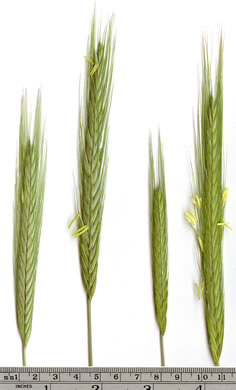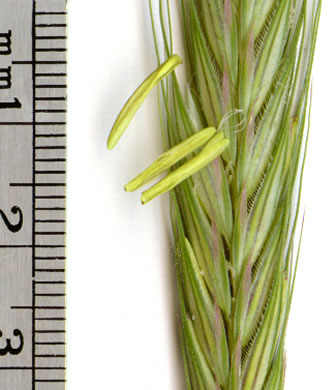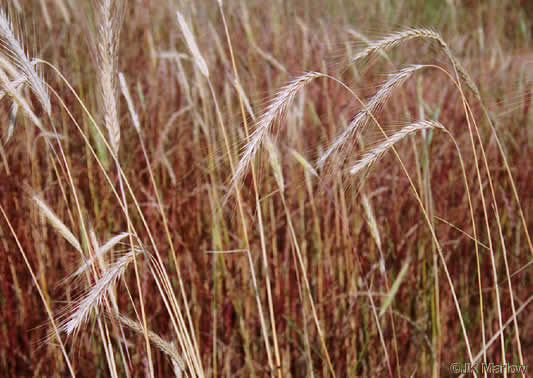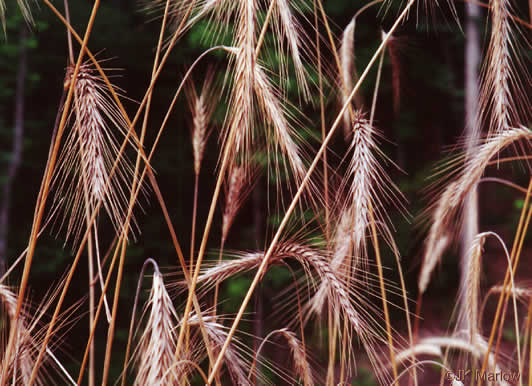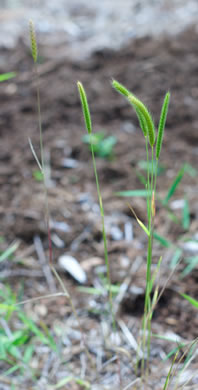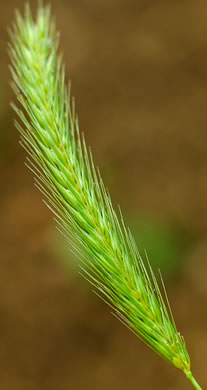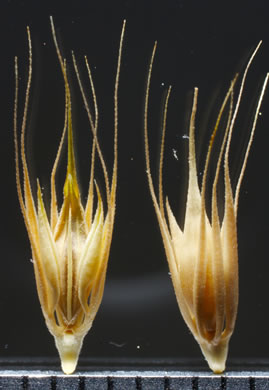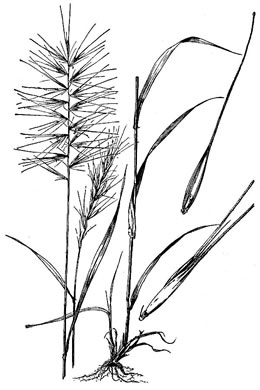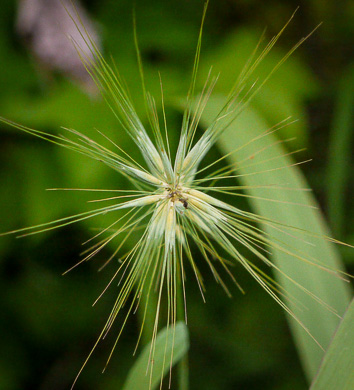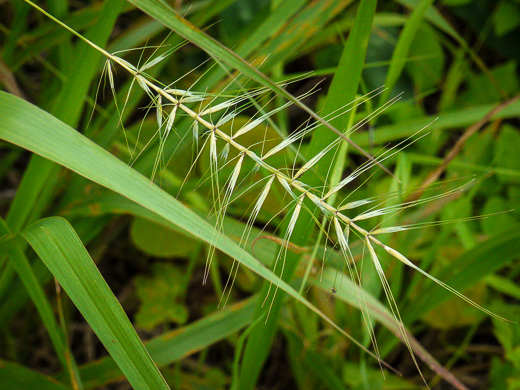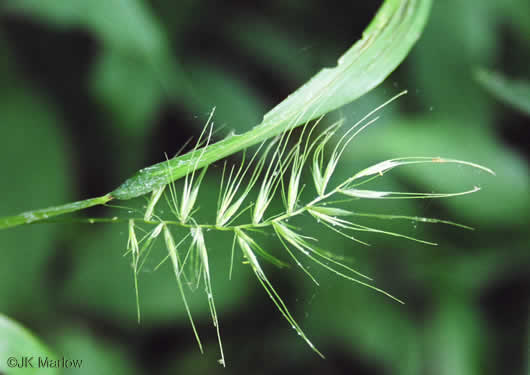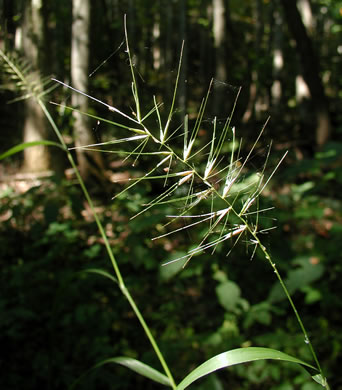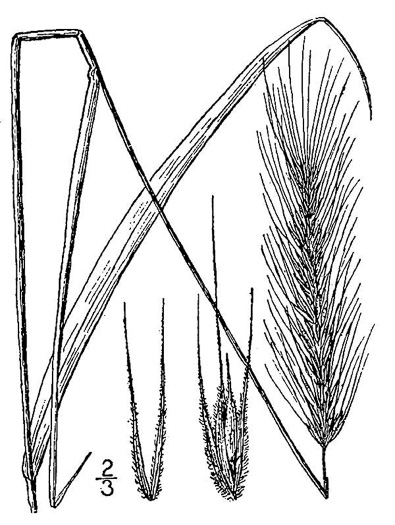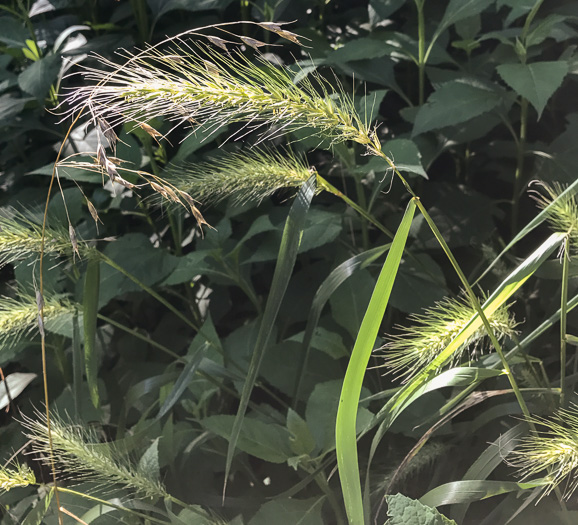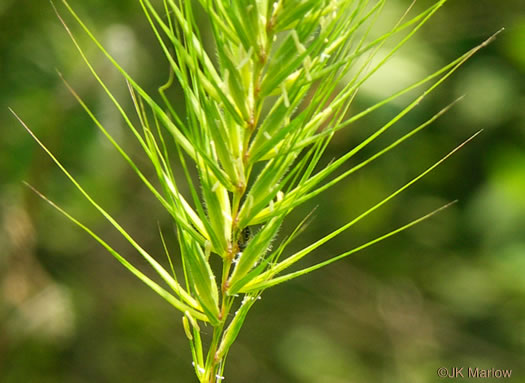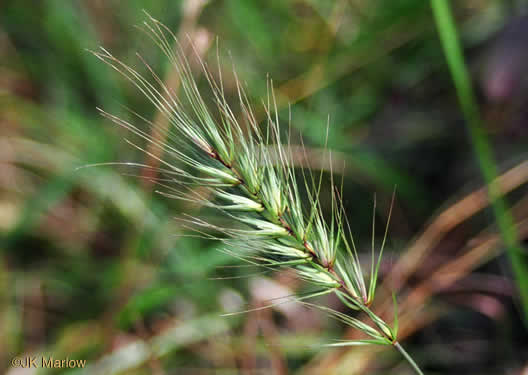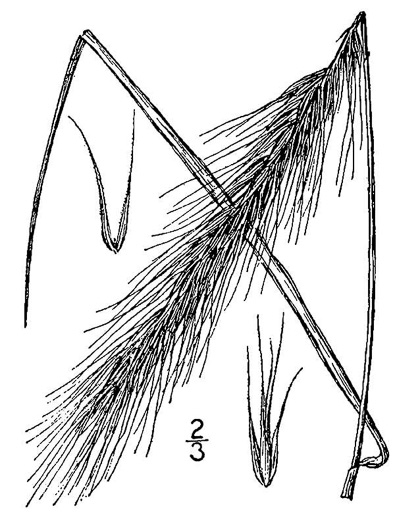Your search found 20 image(s) of seedheads of Bottlebrush Grass, Cereal Rye, Little Barley, and Virginia Wild-rye.
To see larger pictures, click or hover over the thumbnails.
To go to the plant's detail page, click its name.
 Habitat: Fields; commonly cultivated, uncommonly persistent or volunteering after cultivation
Habitat: Fields; commonly cultivated, uncommonly persistent or volunteering after cultivation
Spike 6-15cm long including awns, 12-15mm broad, per Vascular Flora of the Carolinas (Radford, Ahles, & Bell, 1968).
Spikelets alternate on opposite sides of rachis, mostly 2-flowered, per Vascular Flora of the Carolinas (Radford, Ahles, & Bell, 1968).
In habit resembling wheat, but usually taller, spike more slender, nodding, per Manual of the Grasses of the United States (Hitchcock & Chase, 1950).
The lemmas have awns 2-6 cm long, per Weakley's Flora (2023).
 Habitat: Roadsides, fields, pastures, ditches, disturbed areas
Habitat: Roadsides, fields, pastures, ditches, disturbed areas
Culms 10-60cm tall, per Vascular Flora of the Carolinas (Radford, Ahles, & Bell, 1968).
Spikelet clusters alternate on opposite sides of the rachis, per Vascular Flora of the Carolinas (Radford, Ahles, & Bell, 1968).
Spikes 2-8cm long, 5-7mm broad, per Vascular Flora of the Carolinas (Radford, Ahles, & Bell, 1968).
 Habitat: Moist forests, dry forests especially over more fertile soils
Habitat: Moist forests, dry forests especially over more fertile soils
Lemmas convex, rigid, tapering into slender, straight awns 1-4cm long, per Manual of the Grasses of the United States (Hitchcock & Chase, 1950).
Awned spikelets spread at right angles to rachis; glumes absent or reduced, per How to Know the Grasses: Pictured Key Nature Series (Pohl, 1954).
Spikelets usually 2 per node of rachis, usually horizontally divergent, per Vascular Flora of the Carolinas (Radford, Ahles, & Bell, 1968).
Rachis internodes 5-10mm, spikelets horizontally spreading toward maturity, per Manual of the Grasses of the United States (Hitchcock & Chase, 1950).
 Habitat: Moist forests
Habitat: Moist forests
The "bow-legged" glumes are a good mark of recognition, per How to Know the Grasses: Pictured Key Nature Series (Pohl, 1954).
Can be confused with Secale cereale which often nods but has longer bristles, per Grasses, an Identification Guide (Brown, 1979).
Elymus species' spikelets are sessile, usually in 2s, alternating on spike, per Wildflowers of the Eastern United States (Duncan & Duncan, 1999).

